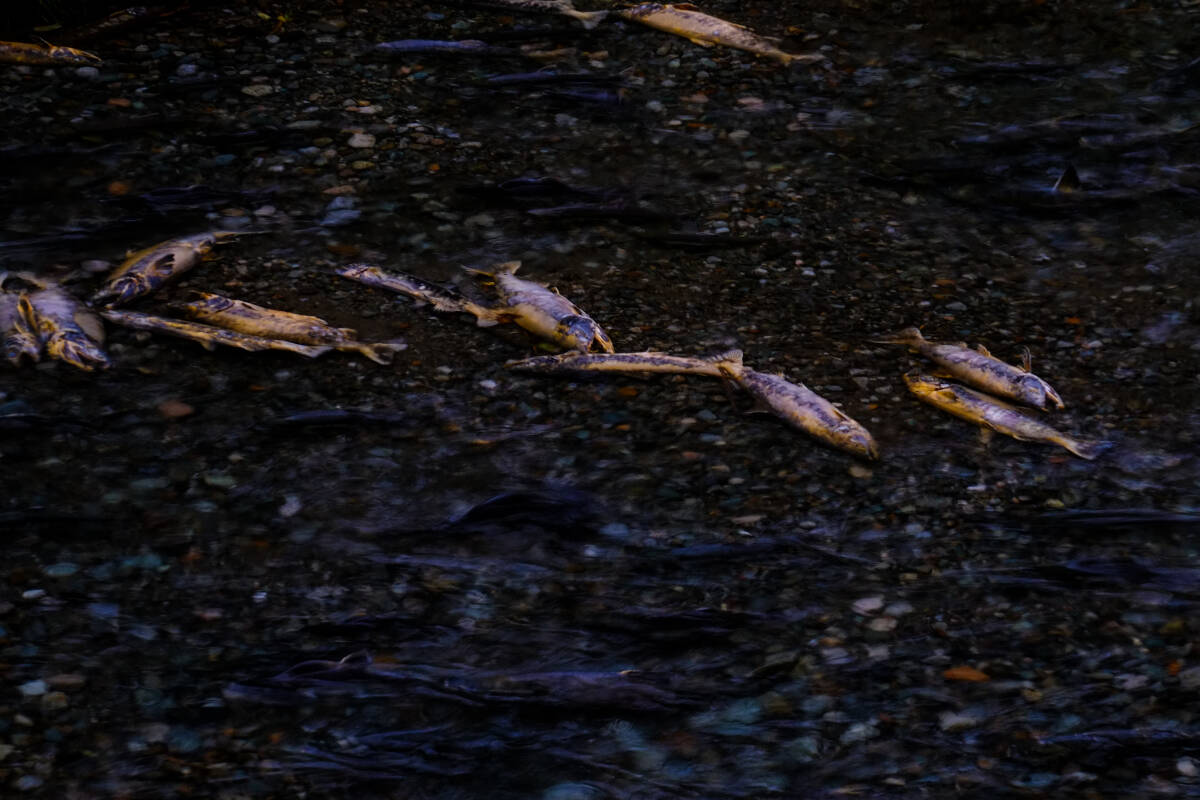Catches of wild pacific salmon on the Fraser, Skeena and Nass Rivers are only a sixth of what they were half a century ago, according to a new study from UBC.
The lead author of the study Andrea Reid, an assistant professor with the Institute for the Ocean and Fisheries, interviewed 48 Indigenous knowledge keepers in 18 First Nations communities along the rivers to get a sense of what salmon catches were like in past decades.
“It was really devasting and beautiful at the same time,” Reid said. “I was spending much of that time moving between different communities. There were moments between interviews because all of a sudden it hits you where it’s the fourth or fifth time where you’re hearing something that’s hard to stomach. It was an incredible learning experience and privilege to get to speak with these people, but also really heavy given what has happened with salmon over the last five to seven decades.”
Reid had spent past seasons chasing salmon through those rivers with radio telemetry technology to determine where the fish were heading and how many there were. Through that work, she developed relationships with local fisheries managers and communities that enabled her latest research.
Elders identified the top five threats to salmon include aquaculture, climate change, contaminants, industrial development and infectious diseases.
For Nations along these rivers, salmon are not merely a food source. For example to the Nisga’a, salmon form the basis ayuukhl (code of law) and adaawak (oral histories), they figure centrally in yukw (feasts, known externally as “potlatches”), and they are a focal point of the Nisga’a Treaty that defines Nisga’a rights tied specifically to salmon.
The study is unique in its approach to centring Indigenous knowledge and science as a basis for research, rather than simply using Indigenous knowledge to fill gaps in Western scientific knowledge. Reid consulted with communities to determine who the knowledge keepers were, then followed protocol and presented participants with gifts prior to the interview. Participants were also offered an honorarium for their time.
“Everyone wanted to do this. I didn’t have anyone say no and that really had an influence on my own perspective moving through this work,” Reid said. “Because this is such a core concern for them, they’re wanting to put in the work and have these conversations as grief-inducing as they can be.”
Reid said it’s unlikely that B.C. salmon can rebound to their pre-colonial abundance, but she believes measures identified by the Elders can help improve the survivability of the species.
“Many advocated for closing salmon fisheries for multiple salmon generations on the scale of 12, 16 years. They were speaking broadly across fishing sectors, rights and stakeholder groups. We see many Nations actively taking up those calls like the Tŝilhqot’in who year after year are forgoing their fishing rights in the interest of the betterment of salmon.”
Elders also advocated for youth to learn their Indigenous languages, as for many, language is the key that unlocks cultural practices around the care and sustainability of salmon.
“I see now the deep interconnections that are there,” Reid said. “In their view, by learning the language we’re deeply connecting with the culture and these are cultures of care that have deep knowledge of these fish.”
Individuals who participated in the study self-identified as belonging to the Nations of the Katzie, Nat’oot’ten (Lake Babine), Nisga’a, Peters, Stó:lō, Secwépemc (Shuswap), St’át’imc, Tŝilhqot’in, Ts’msyen (Tsimshian), and xwməθkwəy̓em (Musqueam).
READ MORE: Commercial salmon harvesters are ‘devastated’ at the recent 79 fishery closures
READ MORE: Research team looking to prevent another Big Bar type landslide that could wipe out B.C. salmon
@SchislerCole
cole.schisler@bpdigital.ca
Like us on Facebook and follow us on Twitter.

